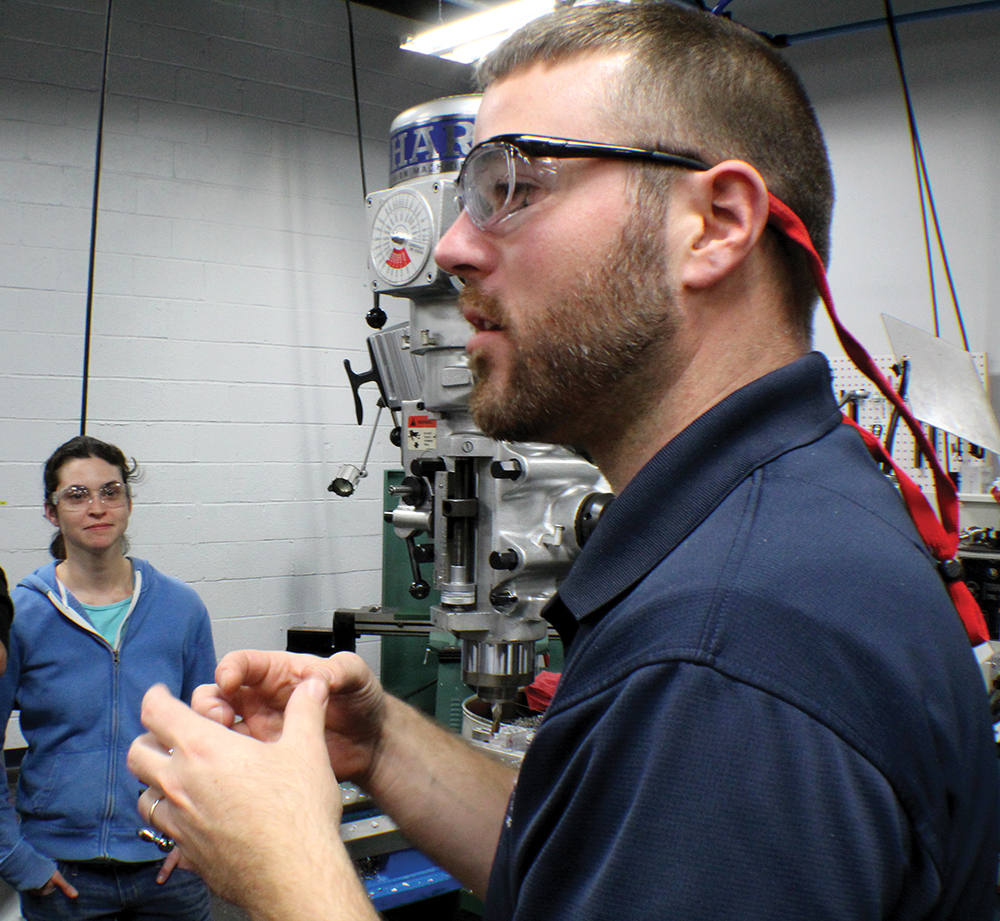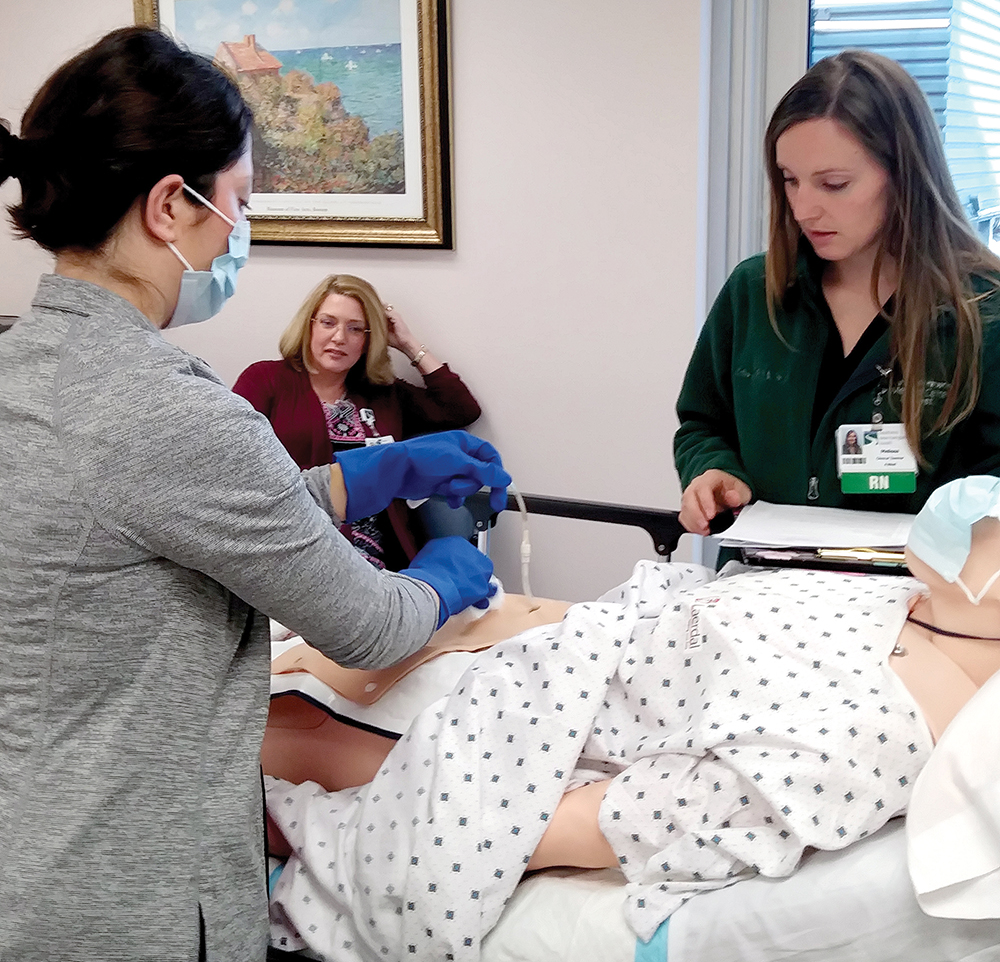
Members of Bellwether Community Credit Union’s LOTT (Leaders of Today and Tomorrow) Committee from left: John Shipulski, Lindsey Kelly-Vail and Barbara Lending. Courtesy photo.
Elizabeth Circharo thrived in sales for Manchester-based medical staffing firm Core Medical Group, but after seven years she needed a change. So she and the company ended up creating the position of training specialist that offered professional growth not only for herself but for Core’s entire workforce.
“After a certain amount of time, some people want something greater,” Circharo says. “If we can do things to support our employees so they feel fulfilled professionally and personally, we hope they will want to stay here for a long time.” One of her current initiatives is to identify, mentor and groom top talent for new positions. “We want to help people cultivate themselves professionally and personally,” she says.
Many NH companies are finding it difficult to recruit the talent they need to grow and are investing heavily in training programs for their existing employees in order to better engage them, keep them, and move the company forward. Retaining top talent is always a challenge, but it’s even more difficult during tight labor markets. New Hampshire’s unemployment rate is hovering around 2.6 percent, meaning talented employees have options.
Investing in Top Performers
Although development programs have long been a cornerstone of big companies, firms of all sizes have ramped up training opportunities in recent years, allowing high performers to learn new skills and new facets of the business while keeping top employees engaged until opportunities for promotion arise.
“You are hoping it will accomplish two goals for the organization. One is to help develop the talent you already have,” says Tuck Pescosolido, a professor at the Peter T. Paul School of Business at the University of NH in Durham. “Second is retaining top talent. If there isn’t a path for continuous development and continued progression, especially now that the economy is improving and unemployment is down, people start feeling more willing to look elsewhere.”
Professional development can vary based on the company, the industry and the skills needed. And whether it runs internally, through educational institutions or consultants these programs always carry a cost. But Pescosolido argues development programs provide businesses with a return on investment that rises when unemployment is low.
Core Medical Group offers managers the chance to become team leaders. For those who may not have sufficient experience to lead units with 20 people or more, they could instead oversee a handful or so of staff while gaining valuable experience. “That is kind of our way of giving them their next step and helping develop themselves,” Circharo says.
Advancing Employees and the Company
Turbocam, a manufacturer of precision parts in Barrington, is among the companies heavily investing in internal training programs. For the past six years, Kyle Robbins has served as Turbocam’s technical trainer, overseeing a facility in Rochester with classrooms and a 3,000-square-foot training space. On a given day, nearly three dozen of the company’s 500 NH employees come through its doors for courses ranging from basic math to advanced engineering to machining and reading blueprints. Employees are paid during training, and they can choose courses that help them gain skills for their current position or positions they’d like to hold in the future.

Kyle Robbins, Turbocam’s technical trainer, speaks to a group of trainees. Courtesy photo.
“That comes as a necessity. Our demographic at Turbocam [includes] a lot of people in their 50s and 60s, a lot of people in their 20s, and not a lot in between,” Robbins says. “We need to get the 20-year-olds up to speed so when the older individuals retire from the company, they can help take over and keep growing.”
Another advantage at Turbocam: Employees whose jobs change based on business demands aren’t simply laid off. Instead, they have the chance to undergo retraining to remain with the company.
“The key words we state when we are interviewing and hiring are attitude and aptitude,” Robbins says. “They are the two things we are looking for. They don’t have to have the skills, but they have to have the drive to want to learn and have the right attitude for it.”
Southern NH Health, the parent company of Southern NH Hospital in Nashua, has more than 2,600 employees and providers. For nurses who show promise, there is the nurse leader position. Once in that role, nurses have opportunities for mentoring, certificate programs at a local community college, as well as access to Essentials of Nurse Managers, an online learning program.
Southern NH Medical Center’s Clinical Development Department also offers “preceptor” training. Karen Tollick, director of Clinical Development, describes preceptor responsibility as “leadership at the bedside.” The program identifies staff who have the potential to guide and develop new staff, and offers a workshop that includes training on giving feedback to others.

Melissa Dukelow, Clinical Teacher, 4 West, right, teaches new graduate nurse Stephanie Petrillo, left, in peritoneal dialysis. Courtesy photo.
The Clinical Development Department also identifies staff who have potential for the charge nurse role. It offers a one-day workshop to provide education on unit flow, personnel leadership and staffing. In addition, the department established the quarterly Clinical Manager Forum that offers presentations on a variety of topics by nursing leadership or human resources.
Creating Stronger Engagement
Bellwether Community Credit Union in Manchester, which dates back to 1921, has about 90 full- and part-time employees spread across three branches and an operations center. Senior VP and Chief Administrative Officer Nancy Nadeau says finding candidates with the right skills can be challenging even when the economy isn’t as strong.
The credit union has internal development programs, including one that targets midlevel managers such as assistant VPs and retail branch managers looking to reach executive levels. Senior management works closely with them on projects, strategic planning and strategic initiatives. “The goal is to expose them to higher level things,” says Nadeau, who handles human resources for the credit union.
Earlier-career employees and supervisors also have the opportunity to expand their skill sets. A decade ago, Bellwether launched the LOTT Committee, (Leaders of Today and Tomorrow.) This program focuses on team building and project management, and offers a glimpse of the strategic work overseen by executives. By getting them involved earlier in the process, they often have input into changes, which creates better buy-in at all levels and allows staff to work together toward common goals and objectives, Nadeau says.
“The value to the credit union is that these groups are bringing new and bright ideas to the table,” she says. “The value to them is that we are exposing them to other areas within the credit union.”

 Current Issue - April 2024
Current Issue - April 2024